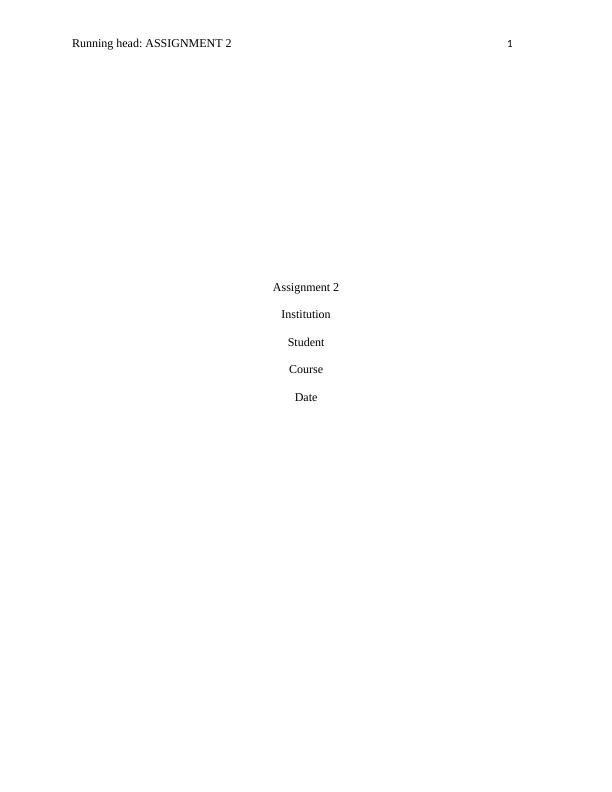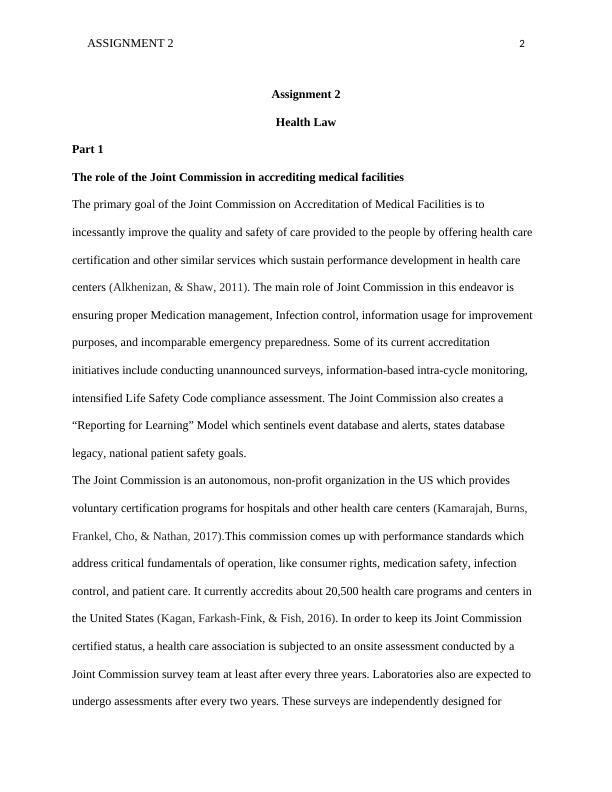ASSIGNMENT 2. 1. Assignment 2 Institution Student Cours
Outline issues related to globalization, power, followership, and cultural change from a health leader’s perspective. Identify major global health issues impacting the U.S. healthcare system and discuss their effects on stakeholders. Discuss global leadership style differences and similarities within the context of transformational leadership. Explore the impact of culture and diversity on modern healthcare organizations and provide a list of cultural attributes to be aware of. Categorize global leadership differences based on the use of power, technology, and knowledge management. Provide leadership approaches for implementing change.
Added on 2023-04-21
ASSIGNMENT 2. 1. Assignment 2 Institution Student Cours
Outline issues related to globalization, power, followership, and cultural change from a health leader’s perspective. Identify major global health issues impacting the U.S. healthcare system and discuss their effects on stakeholders. Discuss global leadership style differences and similarities within the context of transformational leadership. Explore the impact of culture and diversity on modern healthcare organizations and provide a list of cultural attributes to be aware of. Categorize global leadership differences based on the use of power, technology, and knowledge management. Provide leadership approaches for implementing change.
Added on 2023-04-21
End of preview
Want to access all the pages? Upload your documents or become a member.



